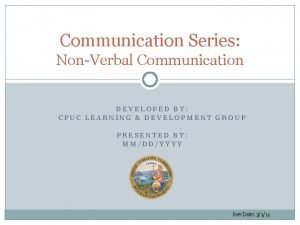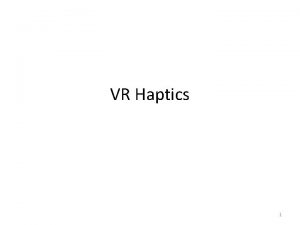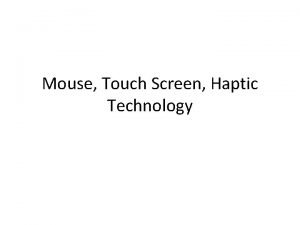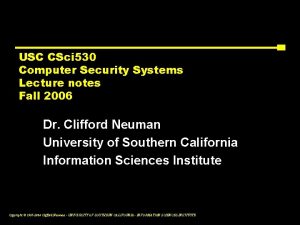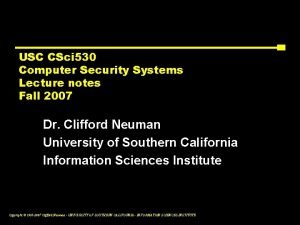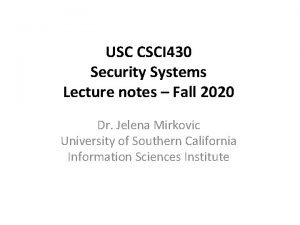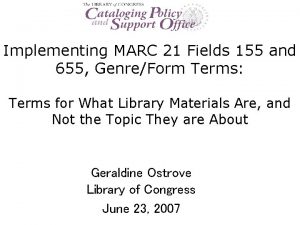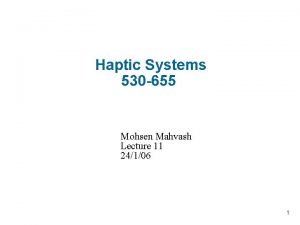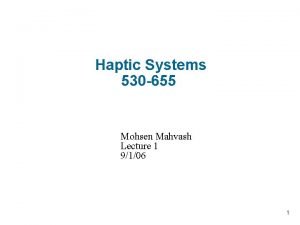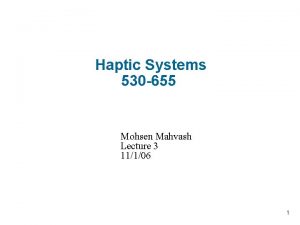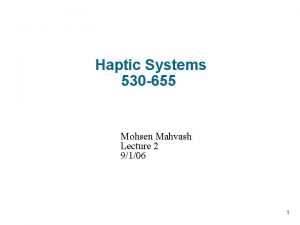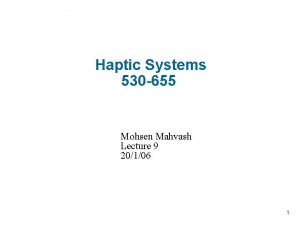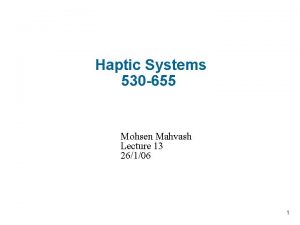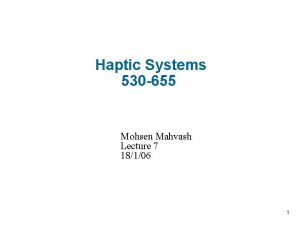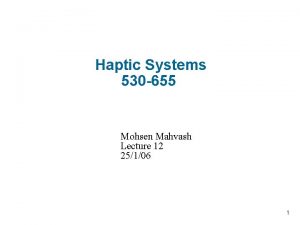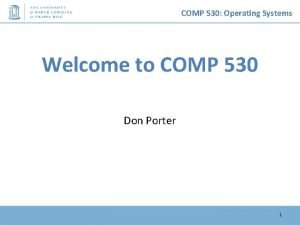Haptic Systems 530 655 Mohsen Mahvash Lecture 10










- Slides: 10

Haptic Systems 530 -655 Mohsen Mahvash Lecture 10 23/1/06 1

Haptic rendering of deformable bodies(continued) Ø A review of last lecture Ø Dynamic deformation models Ø Haptic rendering of cutting Ø References 2

A review of the last lecture n n A review of the last lecture Real-time computation of deformation (30 Hz for graphic rendering) Real-time computation of contact forces (1000 Hz for haptic rendering Finite Element Method Node-based pre-computaion Pre-calculate deformation response for unit displacements at each node Tool-based pre-computaion Pre-calculate tool response for various displacements at each node 3

Dynamic deformation models A review of the last lecture Diagonal Lumped masses at nodes Discrete-time equations Poor stability performance 4

Modeling structural changes Examples: Ø Cutting Ø Fracture among tissue layers The model should: Ø predict the beginning of the structural changes Ø calculate the transient regime Ø calculate the interaction forces 5

Removing body elements and modifying the deformation model The Woodbury formula is used. Model properties Ø Accurate global deformation Ø Discontinues force responses Ø Inaccurate contact forces 6

Interaction regime Principle of conservation of energy is used to predict the beginning of the structural changes and the transient regime ft Example: Cutting with a sharp blade y z ft x X=0 Rs + Δ s Rs X X+ΔX S- c=0 S+ c l S- +Δ S- t S++Δ t S+ c+Δc 7

Interaction modes: Ø Deformation: Ø Cutting: Ø Rupture: 8

Experiments: Three modes: Deformation: 1 -2, 4 -3 Rupture: 2 -3 Cutting: 3 -4 9

References 1. Zhuang, Y. , Canny, J. 2000. Haptic interaction with global deformations. Proc. IEEE Robotics and Automation Conference, IEEE, Vol. 3, pp. 2428 -2433. 2. Mahvash, M. and Hayward, V. 2001, Haptic rendering of cutting, a fracture mechanics approach, Haptics-e, The Electronic Journal of Haptics Research, Vol. 2, No. 3, November 20, 2001 3. Delingette, H. , Cotin, S. , Ayache, N. 1999. A hybrid elastic model allowing real-time cutting, deformations and force-feedback for surgery training and simulation. Computer Animation Proceedings, pp. 70 -81. 4. Bro-Nielsen, M. , 1998. Finite element modeling in surgery simulation. Proceedings of the IEEE, 86: 3, pp. 490– 503. Tomorrow Stability of haptic systems 10

